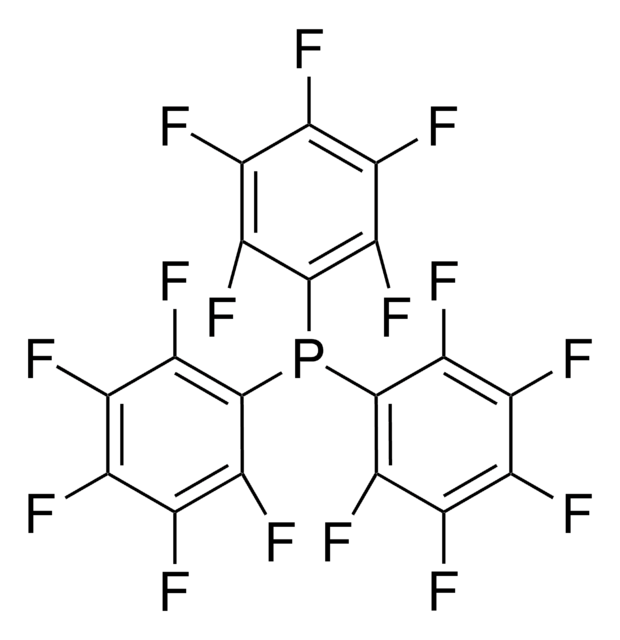393436
Tris(2,6-dimethoxyphenyl)phosphine
98%
Synonim(y):
DMPP
About This Item
Polecane produkty
Próba
98%
Postać
powder
przydatność reakcji
reaction type: Buchwald-Hartwig Cross Coupling Reaction
reaction type: Heck Reaction
reaction type: Hiyama Coupling
reaction type: Negishi Coupling
reaction type: Sonogashira Coupling
reaction type: Stille Coupling
reaction type: Suzuki-Miyaura Coupling
reagent type: ligand
reaction type: Cross Couplings
mp
145-147 °C (lit.)
grupa funkcyjna
phosphine
ciąg SMILES
COc1cccc(OC)c1P(c2c(OC)cccc2OC)c3c(OC)cccc3OC
InChI
1S/C24H27O6P/c1-25-16-10-7-11-17(26-2)22(16)31(23-18(27-3)12-8-13-19(23)28-4)24-20(29-5)14-9-15-21(24)30-6/h7-15H,1-6H3
Klucz InChI
CMLWFCUAXGSMBB-UHFFFAOYSA-N
Zastosowanie
- Preparation of chiral building blocks via hydroalkynylation reactions or ynolates
- Three-component aza-Morita-Baylis-Hillman reactions (aza-MBH)
- Atom-economic synthesis of nitrogen heterocycles and ynenoates from alkynes
- Oxycylizations of allendiols
- Enantioselective aldol reactions
- Pd-mediated cross-coupling, Pd- and Cu-mediated benzannulation reactions and copper-mediated dimerization reactions
Hasło ostrzegawcze
Warning
Zwroty wskazujące rodzaj zagrożenia
Zwroty wskazujące środki ostrożności
Klasyfikacja zagrożeń
Eye Irrit. 2 - Skin Irrit. 2 - STOT SE 3
Organy docelowe
Respiratory system
Kod klasy składowania
11 - Combustible Solids
Klasa zagrożenia wodnego (WGK)
WGK 3
Temperatura zapłonu (°F)
Not applicable
Temperatura zapłonu (°C)
Not applicable
Środki ochrony indywidualnej
dust mask type N95 (US), Eyeshields, Gloves
Certyfikaty analizy (CoA)
Poszukaj Certyfikaty analizy (CoA), wpisując numer partii/serii produktów. Numery serii i partii można znaleźć na etykiecie produktu po słowach „seria” lub „partia”.
Masz już ten produkt?
Dokumenty związane z niedawno zakupionymi produktami zostały zamieszczone w Bibliotece dokumentów.
Klienci oglądali również te produkty
Nasz zespół naukowców ma doświadczenie we wszystkich obszarach badań, w tym w naukach przyrodniczych, materiałoznawstwie, syntezie chemicznej, chromatografii, analityce i wielu innych dziedzinach.
Skontaktuj się z zespołem ds. pomocy technicznej
















